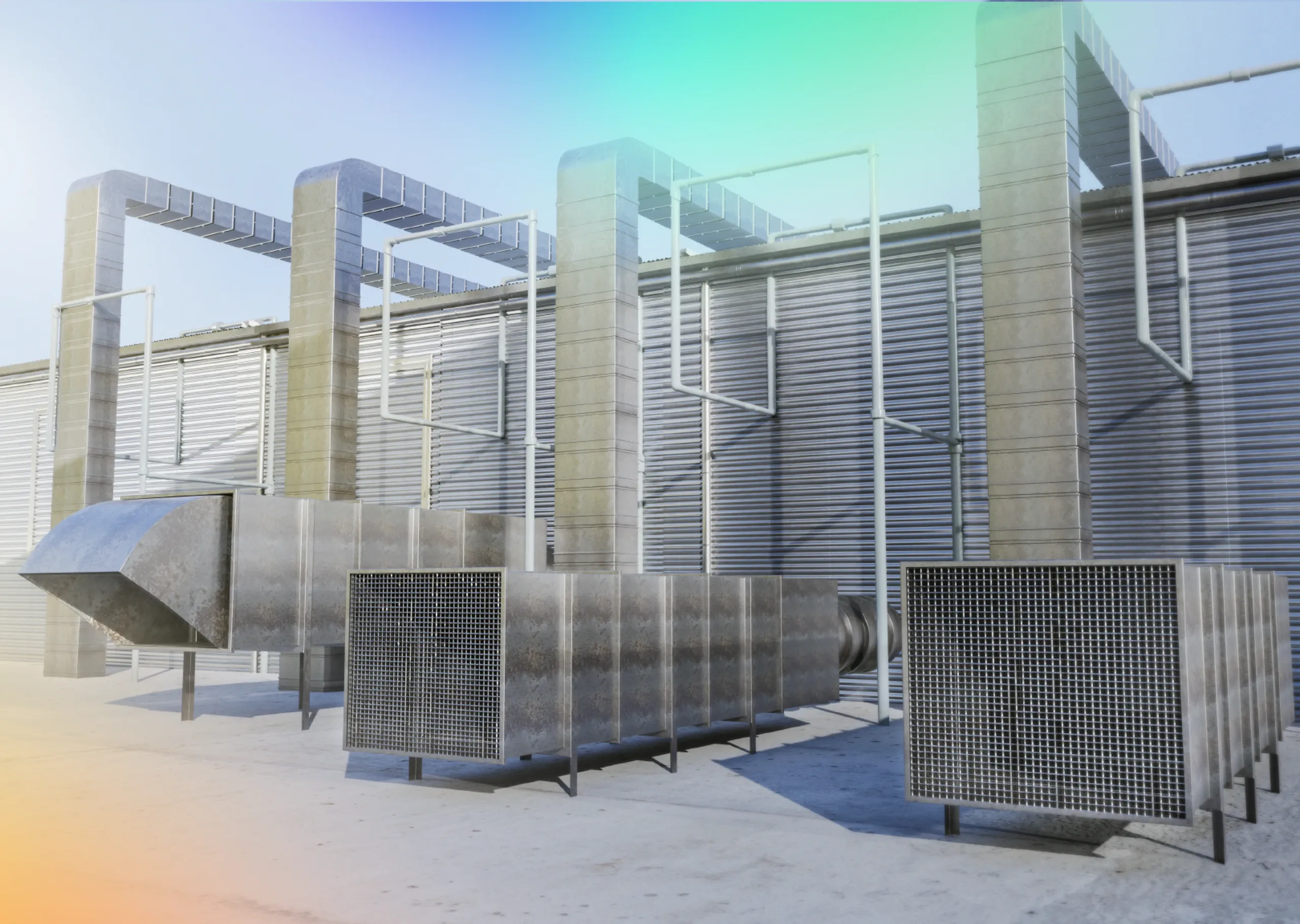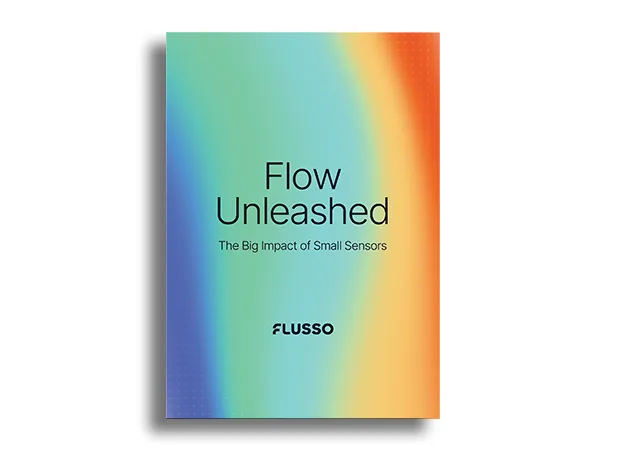10 February 2025
Understanding Air Flow Sensor Use Cases | HVAC
Understanding Air Flow Sensor Use Cases | HVAC
The importance of sensors in HVAC systems
Airflow sensors are integral to Heating, Ventilation, and Air Conditioning (HVAC) systems. They are essentially the beating heart of the system, generating and providing critical information and data on the volume and velocity of air passing through that system.
This real-time data allows the system’s control mechanisms to distribute the right amount of air to various zones in a room or building, thus enabling precise regulation of indoor air quality and temperature whilst maximising energy efficiency and minimising waste.
Traditionally, airflow sensors have come with enduring (and frustrating) challenges around accuracy and reliability. Flusso’s here to change the status quo. Our airflow sensors have a big impact both within conventional HVAC systems and functionalities as well as innovative opportunities for the industry.
Not only are our sensors incomparably compact, but they lead the market in accuracy and repeatability, giving manufacturers peace of mind when developing their latest HVAC systems.
What are the underlying benefits?
We’re entering something of a golden era for airflow sensors within the HVAC space. Since their development and incorporation around twenty years ago, they’ve become a mainstay in HVAC design and development, and it’s clear to see why.
In this piece, we’re going to focus on how airflow sensors within HVAC systems improve indoor air quality, help increase people’s comfort, keep the systems operating safely, and also enhance the energy efficiency of the systems themselves.
Improving indoor air quality
This tends to be the centrepiece. This is a big appeal of incorporating airflow sensors into HVAC systems. We want to ensure the air we’re breathing is of good quality. Airflow sensors — including the leading products from Flusso — play a crucial role in making this a reality by regulating ventilation and monitoring filter performance to minimise contamination. Here’s how they contribute:
Regulating ventilation
Simply put: airflow sensors measure the amount of fresh and/or warm outdoor air brought into a building/room/vehicle etc., and ensure that an optimal volume and temperature of conditioned air is distributed throughout the space. Proper ventilation through airflow sensors helps to dilute indoor pollutants, volatile organic compounds (VOCs), carbon dioxide (CO2), and airborne particles. This is absolutely pivotal to maintaining good indoor air quality.
Detecting stagnant air and minimising contaminants
Airflow sensors can play a pivotal role in HVAC systems detecting stagnant air and regulating pollutants and contaminants. Whether it’s smoke, chemicals, or even air-borne diseases such as COVID-19, airflow sensors recognise anomalies and trigger automated adjustments from the HVAC system to mitigate the spread of contaminants and prevent them from reaching harmful levels.
Keeping filters fighting fit
Airflow sensors enable continuous monitoring of filtration performance to signal when filters need replacing or cleaning. This ensures that the HVAC system maintains optimal filtration efficiency, capturing dust, pollen, allergens, and other particles that affect indoor air quality.
Multi-room intelligence
Integrated airflow sensors are only getting smarter. Combined with high-quality software, these sensors can measure airflow across rooms/zones within a building to adjust dampers and fans to ensure that clean, conditioned air is delivered where it’s needed most.
By maintaining healthy indoor air quality, these sensors contribute to people’s comfort, to the safety of the spaces they’re deployed within, and to increased energy efficiency of the HVAC system itself. Let’s delve into these points now.
Comfort is king, temperature is key
Good indoor air quality makes for a more comfortable experience, whether you’re sleeping, sitting reading a book, or driving from A to B. Flusso’s airflow sensors are equipped to measure and help regulate temperature within these different environments.
When integrated effectively into an HVAC system, airflow sensors provide flow and temperature data that allows for the adjustment of heating and cooling mechanisms within the ventilation system itself. Off the back of airflow readings, the ventilation system can then continuously tweak the air flow being delivered up and down to maintain desired temperature levels.
Precise temperature control helps keep people comfortable indoors, regardless of what’s going on outside.
Enhanced filtration performance and safety
Airflow sensors help ensure the HVAC system operates within optimal conditions by triggering an alert to the ventilation system regarding any deviations from normal operation. This proactive approach helps extend the HVAC equipment’s life span and reduces the potential need for costly repairs.
For example, an airflow sensor may register that a sub-optimal amount of fresh outdoor air is entering the HVAC system and being distributed; if the flow sensor does not acknowledge this, the indoor quality may progress to a point that poses a risk to the health of inhabitants.
Airflow sensors form an integral part of the airflow delivery and ventilation system, helping building owners and facility managers to maximise the performance and longevity of their HVAC systems.
Energy efficiency and Auto Tuning
This point is something of a culmination. At their core, sensors are integrated with HVAC systems to help them operate more efficiently. Sensors provide real-time data and optimisation suggestions that help the systems reduce their energy expenditure and thus utility costs.
Maximising energy efficiency continues to be a major priority across industries, and the HVAC space is no different; in fact, it’s increasingly common we hear from industrial partners because they’re eager to improve their energy efficiency. Here are some of the ways airflow sensors bring greater efficiency to the equation:
Optimising airflow and balancing air distribution
Monitoring flow and prompting the HVAC system to adjust fan speeds and dampers to deliver the right amount of conditioned air to each zone/room. This prevents overworking the system and wasting energy.
Detecting faults and abnormalities
Airflow sensors can detect clogged filters, blocked ducts, or malfunctioning fans, which can either prompt maintenance staff to adjust settings or trigger an automatic optimisation response. This proactive approach prevents energy waste caused by inefficient operations.
Dynamic fan control
Airflow sensors can contribute to adjusting fan speeds based on required airflow in a particular space; hence the system consumes only the necessary amount of energy to meet the current cooling or heating needs. This dynamic control helps conserve energy during periods of lower demand.
Final thoughts
Airflow sensors are vital to improving indoor air quality, maintaining the safety of HVAC systems, and optimising energy efficiency. We are finding an increasing number of industrial partners that recognise this fact.
With HVAC systems evolving to minimise footprint and integrate seamlessly with advanced infrastructure, Flusso’s sensors are front-and-centre for their miniature size and standout accuracy and reliability.
We can’t wait to see how the HVAC industry continues to evolve to accommodate Flusso’s sensing technology, helping us further enhance efficiency and create advanced smart spaces.



